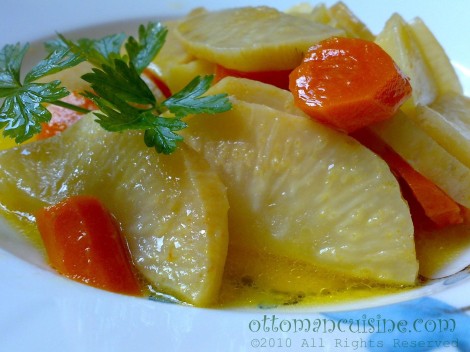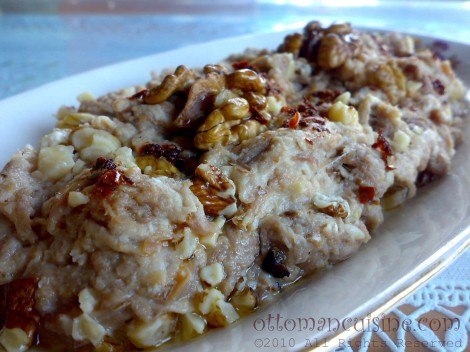
Celeriac is the root of what is called “celery”. In my university years, in Sydney, I hadn’t seen celeriac anywhere for quite a long time, then one day I came across this non-starchy root vegetable in the vegie isle of a supermarket. As soon as I saw this prince charming hid in the form of an ugly frog, I started jumping up and down like a child. At the check out, I noticed that something was wrong, as the girl kept skipping my lovely celeriac and finished checking out everything else I bought. Then she said she would be back in a minute and left. When she returned, she seemed quite anxious, turned to me and said “please don’t get me wrong, what do you call this thing? I tried to find it in the isle but no luck “, she obviously thought that I would be offended by her ignorance of our cultural habit of eating this weird substance. I smiled and replied, celeriac, celery-root in other words. She was relieved by my calm reaction, glad that I didn’t turn out to be the furious Muslim she was afraid that I was.
Anyhoo, another time at the same supermarket checkout, an old lady asked me about how I prepared “this thing”. I gave her a quick recipe of this olive oil dish and she seemed happy, she said “there is one other Polish lady buying this, I haven’t seen anyone else”. I don’t know how the Polish make this into a dish, but my favorite is an olive oil based recipe.














